Ông Nguyễn Quang Vĩnh – Phó Giám đốc Sở Nông nghiệp và Phát triển nông thôn tỉnh Lào Cai – đã có cuộc trao đổi với phóng viên Báo Công Thương xung quanh vấn đề này.
Được biết, Lào Cai có ban hành Nghị quyết số 10-NQ/BTV-TU về chiến lược phát triển nông nghiệp hàng hóa đến năm 2030, tầm nhìn đến năm 2050, xin ông cho biết các ngành hàng chủ lực của tỉnh là những ngành gì? Định hướng phát triển của tỉnh đối với các ngành hàng này như thế nào?
Lào Cai là một tỉnh miền núi, có nhiều vùng tiểu khí hậu khác nhau, do vậy, có nhiều sản phẩm đặc hữu có giá trị và tiềm năng xuất khẩu cao. Nhằm khai thức tiềm năng, lợi thế, đẩy mạnh ứng dụng khoa học – kỹ thuật để phát triển sản xuất nông nghiệp hàng hóa bền vững, gắn với chế biến tiêu thụ sản phẩm, nâng cao giá trị sản xuất nông nghiệp, tạo sản phẩm sạch, an toàn, nâng cao đời sống nông dân, đồng thời đáp ứng yêu cầu hội nhập kinh tế quốc tế trong tình hình mới; ngay từ đầu nhiệm kỳ (năm 2021), tỉnh ủy Lào Cai đã ban hành Nghị quyết số 10-NQ/BTV về Chiến lược phát triển các cây trồng chủ lực đến năm 2030, tầm nhìn đến năm 2050.
 |
| Chuối Mường Khương được bán tại Phiên chợ văn hoá thúc đẩy tiêu thụ sản phẩm vùng dân tộc thiểu số và miền núi tỉnh Lào Cai. Ảnh: MA – MC |
Theo đó, có 6 ngành hàng chủ lực, gồm: 5 loại cây trồng là cây chè, cây chuối, cây dứa, cây dược liệu, cây quế và 01 ngành hàng chăn nuôi lợn. Mục tiêu định hướng phát triển của tỉnh đối với các ngành hàng này đến năm 2025 và năm 2030 cụ thể như sau: Đối với cây chè, đến năm 2025, diện tích đạt 8.420 ha, sản lượng 70.000 tấn, giá trị đạt trên 700 tỷ đồng, đến năm 2030 diện tích đạt khoảng 10.000 ha, sản lượng đạt 93.000 tấn, giá trị 1.100 tỷ đồng.
Đối với cây chuối, duy trì và phát triển vùng sản xuất chuối hàng hóa, tập trung nâng cao năng suất chất lượng sản phẩm. Phấn đấu hết năm 2025 diện tích đạt khoảng trên 2.500 ha, sản lượng đạt 70.000 tấn, giá trị 800 tỷ đông. Xây dựng vùng sản xuất tập trung theo hướng VietGAP, đảm bảo 100% diện tích chuối hàng hóa được cấp mã vùng trồng; trên 90% sản lượng được xuất khẩu chính ngạch.
Đối với cây dứa, tập trung nâng cao năng suất chất lượng sản phẩm; phấn đấu hết năm 2025 diện tích đạt 2.500 ha; đến năm 2030 diện tích đạt khoảng 3.000 ha, sản lượng khoảng 63.000 tấn, giá trị ước đạt hơn 500 tỷ đồng; tiếp tục xây dựng mô hình chuyển đổi giống mới có năng suất cao, chất lượng sản phẩm tốt (giống MD2, H180) từng bước thay thế giống cũ năng suất thấp, đẩy mạnh rải vụ dứa, phục vụ cho chế biến đóng hộp xuất khẩu sang thị trường EU.
Đối với cây dược liệu, tiếp tục cơ cấu lại vùng sản xuất dược liệu hiện có, đảm bảo phát triển dược liệu bền vững tại các huyện Bắc Hà, Si Ma Cai, Bát Xát, Sa Pa; Thực hiện chuyển đổi một phần diện tích đất trồng ngô kém hiệu quả, có điều kiện tự nhiên phù hợp để phát triển cây dược liệu. Phấn đấu hết năm 2025 duy trì và phát triển diện tích dược liệu hàng năm khoảng 1.500 ha. Phát triển dược liệu theo hướng sản xuất hàng hóa; đẩy mạnh liên kết sản xuất, gắn vùng nguyên liệu với cơ sở chế biến, tiêu thụ sản phẩm Tổ chức giám sát chặt chẽ các vùng sản xuất cây dược liệu theo tiêu chuẩn GACP-WHO để đảm bảo chất lượng; tạo điều kiện cho các doanh nghiệp đầu tư xây dựng nhà máy bảo quản, chế biến sâu dược liệu tại Bát Xát, Bắc Hà, Sa Pa, TP. Lào Cai. Đến năm 2030, tổng diện tích cây dược liệu đạt 5.000 ha, sản lượng 28.000 tấn, giá trị trên 900 tỷ đồng.
Đối với cây quế, năm 2025 diện tích đạt 52.000 ha; đến năm 2030 diện tích đạt 66.000 ha, giá trị đạt khoảng 1.800 tỷ đồng.
Đối với ngành chăn nuôi lợn: Đến năm 2025 tổng đàn đạt 600.000 con, giá trị 2.200 tỷ đồng; năm 2030 tổng đàn đạt 1.000.000 con, giá trị 3.900 tỷ đồng. Định hướng đến năm 2050, giá trị sản xuất hàng hóa các ngành hàng chủ lực đạt khoảng 17.000 tỷ đồng, chiếm khoảng 75% tổng giá trị sản xuất ngành nông nghiệp. Hình thành được các vùng sản xuất nông nghiệp hàng hóa theo chuỗi giá trị, nâng cao giá trị gia tăng và sản xuất bền vững.
Tạo chuyển biến căn bản về quy mô, hiệu quả, trình độ sản xuất; tăng năng suất, chất lượng và khả năng cạnh tranh của các sản phẩm nông nghiệp góp phần nâng cao thu nhập, cải thiện đời sống nhân dân, thúc đẩy phát triển kinh tế – xã hội của tỉnh.
Việc xuất khẩu các ngành hàng chủ lực của tỉnh sang các thị trường Trung Quốc và các thị trường quốc tế có vướng mắc gì không? Theo ông, đâu là nguyên nhân của tình trạng này?
Mặc dù có 5/6 sản phẩm chủ lực của tỉnh đã được xuất khẩu sang thị trường nước ngoài nhưng việc xuất khẩu các ngành hàng chủ lực của tỉnh Lào Cai vẫn còn một số khó khăn.
Theo đó, Lào Cai chưa có trung tâm logistics lớn tầm cỡ quốc tế, nên chi phí logistics tại cửa khẩu cao dẫn đến giá thành sản phẩm xuất khẩu cao và không có lợi thế cạnh tranh. Hiện nay, thị trường Trung Quốc đang đưa ra nhiều rào cản kỹ thuật mới nên đã ảnh hưởng không nhỏ đến xuất khẩu nông sản Việt Nam. Các sản phẩm xuất khẩu chủ yếu xuất khẩu dưới dạng tươi hoặc sơ chế, chế biến thô nên giá trị xuất khẩu chưa cao, phân tích dự báo thị trường còn hạn chế.
 |
| Ông Nguyễn Quang Vĩnh – Phó Giám đốc Sở Nông nghiệp và Phát triển nông thôn tỉnh Lào Cai. Ảnh: Chu Khôi |
Nguyên nhân là do các vùng nguyên liệu hàng hóa tập trung có chất lượng được chứng nhận đạt các tiêu chuẩn tiên tiến (VietGAP, hữu cơ, HACCP, ISO 22000…) phục vụ xuất khẩu nông sản còn ít; Công nghệ chế biến còn lạc hậu nên giá trị sản phẩm nông sản còn thấp; doanh nghiệp hoạt động trong lĩnh vực nông nghiệp chủ yếu có quy mô vừa, nhỏ và siêu nhỏ, năng lực tài chính và quản trị doanh nghiệp còn hạn chế.
Bên cạnh đó, một số ngành, hàng chủ lực có thế mạnh của tỉnh hiện nay có ưu thế xuất khẩu lớn nhưng chưa có trong danh sách các sản phẩm xuất khẩu chính ngạch sang thị trường Trung Quốc (như: dứa, dược liệu…) nên khó khăn trong việc xuất khẩu. Việc xây dựng chuỗi liên kết giữa doanh nghiệp và người nông dân còn lỏng lẻo, việc xây dựng được thương hiệu đối với sản phẩm nông nghiệp còn hạn chế. Người sản xuất, doanh nghiệp xuất khẩu hiểu biết hạn chế và chưa nhận thức đúng tầm quan trọng của việc phải tuân thủ các yêu cầu của nước nhập khẩu…
Để giúp các doanh nghiệp/HTX của Lào Cai xuất khẩu sang thị trường Trung Quốc và thị trường các nước được thuận lợi, giúp doanh nghiệp nắm vững những quy định, yêu cầu cần thiết để đẩy mạnh xuất khẩu nông sản sang thị trường Trung Quốc và các nước khác trên thế giới, Sở đưa ra những giải pháp gì, thưa ông?
Chuẩn hóa chất lượng sản phẩm theo đúng yêu cầu của Trung Quốc chính là giải pháp quan trọng nhất để xuất khẩu chính ngạch đạt hiệu quả cao cũng như mở cửa được cho nhiều mặt hàng khác vào thị trường này thời gian tới.
Riêng mặt hàng xuất khẩu chủ lực và trọng tâm của Lào Cai là sản phẩm chuối, việc giữ ổn định chất lượng và giám sát chất lượng trở nên vô cùng quan trọng, nhất là trong điều kiện chuối Việt Nam phải cạnh tranh ngày càng gay gắt với chuối đến từ các quốc gia Campuchia, Lào và Philippines tại thị trường Trung Quốc.
Bên cạnh đó, đẩy mạnh phát triển vùng nguyên liệu hàng hóa tập trung có chất lượng được chứng nhận đạt các tiêu chuẩn tiên tiến phục vụ xuất khẩu nông sản. Tăng cường công tác quản lý mã số vùng trồng, cơ sở đóng gói nông sản phục vụ xuất khẩu trên địa bàn; chủ động hướng dẫn các doanh nghiệp, HTX các thủ tục để được cấp mã số vùng trồng nông sản xuất khẩu, hướng dẫn tổ chức sản xuất hàng hóa phù hợp quy định về tiêu chuẩn nông sản xuất khẩu trên địa bàn tỉnh.
Tăng cường liên kết sản xuất gắn với chế biến và tiêu thụ sản phẩm nâng cao giá trị nông sản phục vụ xuất khẩu; đẩy mạnh chuyển giao ứng dụng khoa học – công nghệ trong sản xuất, bảo quản, chế biến nâng cao chất lượng và giá trị cạnh tranh của nông sản.
Chủ động theo dõi sát tình hình, kịp thời nắm bắt thông tin để cung cấp đầy đủ, chính xác về diễn biến thị trường nông sản và hướng dẫn, khuyến cáo các địa phương, doanh nghiệp và các hiệp hội, người sản xuất tuân thủ quy định về tiêu chuẩn, quy chuẩn, chất lượng, quy định của thị trường nhập khẩu để chủ động xây dựng, điều chỉnh kế hoạch sản xuất, kinh doanh phù hợp, bảo đảm nguồn cung phục vụ tiêu dùng trong nước và xuất khẩu, ổn định giá thị trường.
Bên cạnh quản lý tốt chất lượng hàng xuất khẩu, cần đẩy mạnh và nâng cao hiệu quả công tác xúc tiến thương mại. Đặc biệt đối với một số ngành hàng/nhóm mặt hàng có thế mạnh xuất khẩu nhằm tạo hiệu ứng lan tỏa sang các nhóm hàng khác cùng loại; tổ chức các hội nghị xúc tiến tiêu thụ hàng nông sản đặc thù địa phương tại các khu vực thị trường nằm sâu trong nội địa Trung Quốc nhằm thúc đẩy chuyển dịch xuất khẩu theo hình thức thương mại chính quy.
Ngoài ra, cần xây dựng các video ngắn nhằm quảng bá về sản phẩm, thương hiệu, hình ảnh nông sản Việt Nam bằng tiếng Trung Quốc/tiếng Anh trên các nền tảng mạng xã hội Trung Quốc như Tiktok, Wechat, Weibo… để tìm kiếm lượng khách hàng lớn và đa dạng.
Khuyến khích, hỗ trợ doanh nghiệp xây dựng thương hiệu, nhãn hiệu; tăng cường tuyên truyền, quảng bá tiềm năng thế mạnh của tỉnh; từng bước nâng cao chất lượng các hoạt động xúc tiến thương mại. Thường xuyên nắm bắt, cập nhật thông tin về thị trường trong nước, quốc tế đến các doanh nghiệp, HTX sản xuất, kinh doanh trên địa bàn tỉnh.
Đề nghị Bộ Nông nghiệp và Phát triển nông thôn xem xét sớm đàm phán với Tổng cục Hải quan – Trung Quốc để ký Nghị định thư về yêu cầu kiểm dịch thực vật đối với quả dứa tươi xuất khẩu từ Việt Nam sang Trung Quốc. Đây là điều kiện quan trọng để quả dứa tươi của Lào Cai có đầu ra bền vững tại thị trường Trung Quốc trong thời gian sớm nhất.
Xin cảm ơn ông!
Nguồn: https://congthuong.vn/lao-cai-ket-noi-chuoi-nang-cao-gia-tri-nong-san-344401.html










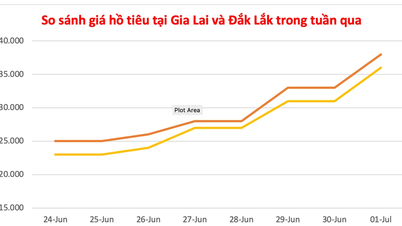



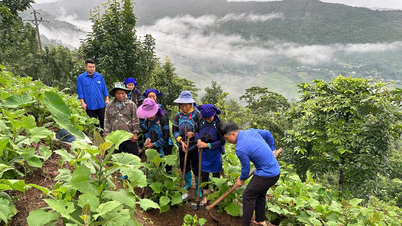















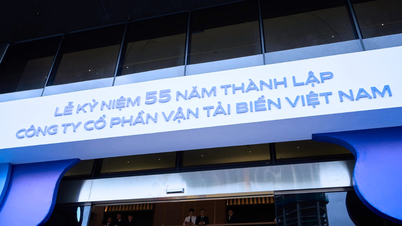



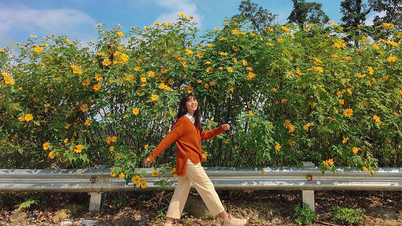






















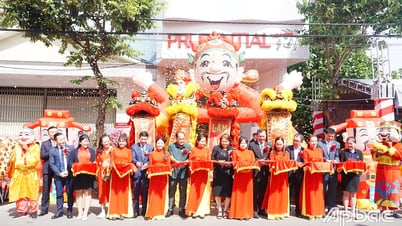






![[Ảnh] Tổng Bí thư Tô Lâm dự ra mắt 3 nền tảng số phục vụ triển khai Nghị quyết số 57-NQ/TW](https://vphoto.vietnam.vn/thumb/402x226/vietnam/resource/IMAGE/2025/7/2/d7fb7a42b2c74ffbb1da1124c24d41d3)























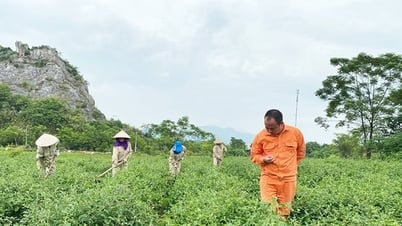






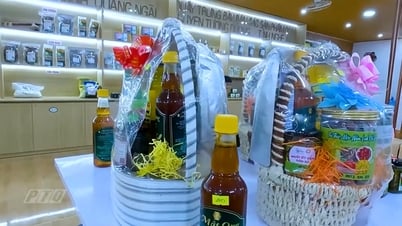





Bình luận (0)